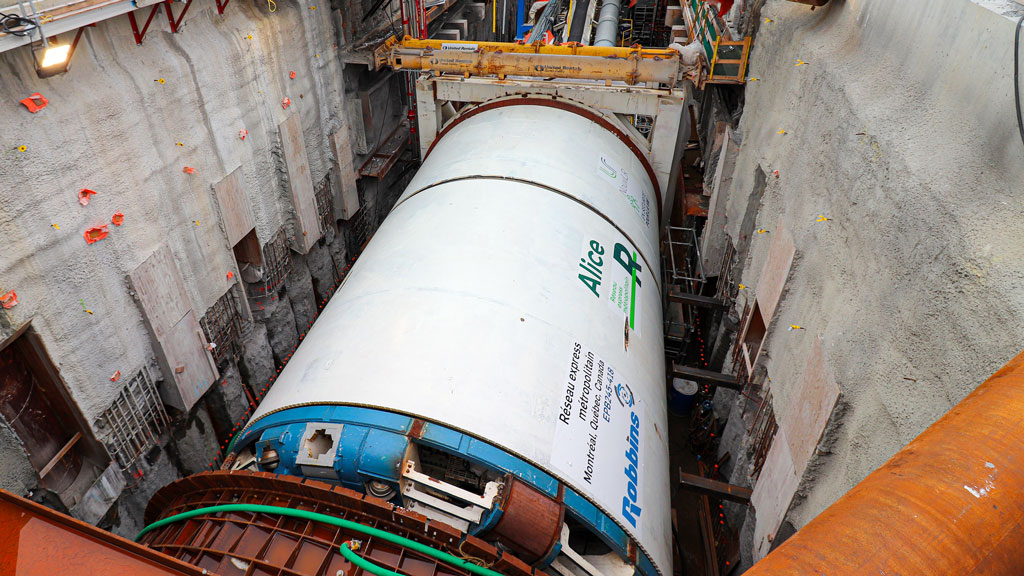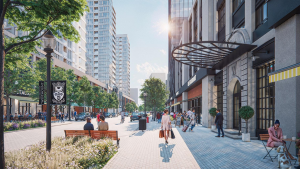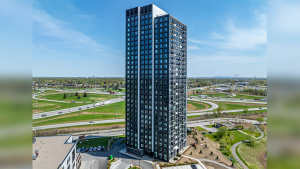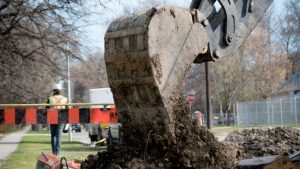It’s like an underground submarine, boring beneath the Earth’s surface.
In this case it was the Robbins Earth Pressure Balance custom designed Tunnel Boring Machine, which has now completed one of the most delicate construction segments for Montreal’s new Réseau express métropolitain (REM) 67 kilometre light rail network.
The almost two-year drilling of 2.5 kilometres under the delicate soft soil took place in the so-called West Island Technoparc wetlands and the runways of the city’s Trudeau International Airport.
It’s the only section of the surface and elevated REM that had to be bored underground, so as not to disrupt the natural ecology as well as the massive airport infrastructure leading to a station in the bowels of the airport, due to open in 2025.
“We had challenges because of the geological composition of the soil below the wetlands as it was loose soil,” said Xavier Dontigny, deputy director, tunnel, for NouvLR, the engineering and construction consortium building the REM. “As for the airport, we needed extreme precautions to go under the takeoff runway, a challenge that was accomplished by a team in collaboration with ADM.”
The almost $7 billion transit project, Montreal’s largest since completion of the subway system more than 50 years ago, will link widely disparate suburbs with the downtown.
While the vast majority of the lines are elevated or on surface right-of-ways, the REM called in one of the world’s elite tunnel borer manufacturers Robbins of Cleveland, Ohio to build a machine that was used to open this stretch.
The borer in fact was an Earth-bound submarine, or a 155-metre-long “mobile factory” as the REM calls it, with a crew of 10 (operators, mechanics, electricians and handlers) as it consumed soil and rocky debris on its excavation mission 30 metres below surface, eventually evacuating more than 300,000 tons of material.
Robbins Earth Balance (REB) machine is especially designed for subterranean soft soil conditions containing water under pressure. The name comes from the fact the machine controls the stability of the tunnel face and possible surface subsidence by monitoring and adjusting the pressure inside the cutterhead chamber with the pressure outside.
It was a sizable task itself. The assembly of the machine, dubbed “Alice” after Canadian geologist Alice Evelyn Wilson, took 60 trucks to ferry the borer’s component pieces from its U.S. factory to Montreal, and assembled onsite.
REB’s cutting wheel itself measured 7.38 metres in diameter and contained 47 discs, each applying 25 tons of pressure, to break up the soil and rocks.
The excavation was a 24-hour operation with a speed of 1.70 metres per hour. That was exactly the length for one cylindrical prefabricated seven-section concrete ring, which the machine also laid sequentially as it progressed, forming the tunnel walls itself behind it.
There were 12,600 segments or “voussoirs” composing the 1,800 rings. This means “as the tunnel is being bored the final liner is directly installed and no concrete pours are needed for the tunnel support,” said Dontigny.
The choreography is all performed with the TBM. From the cutting head to its rear, debris is removed by a screw conveyor, a thrust cylinder moves the machine forward, an erector lays the voussoirs, a cradle brings the segments forward, a cockpit controls the borer, and a belt conveyor dumps the rubble at the rear, brought to surface and poured into trucks.
It wasn’t all smooth sailing for Alice. When maintenance had to be done on the cutting head, liquid nitrogen had to be injected deep into the soil to prevent collapse of the wetlands.
Meanwhile some areas of soil settlement were backfilled in 2021 from soil excavated at another construction site, REM’s Marie-Curie station — the identical watery clay material as in the wetlands.
It was expected that vegetation would begin to be restored this year.
Another issue was a drop in water level, which some conservationists blamed on the drilling. But REM said experts found 2021 was a particularly dry year. Aerial photos from years past also showed the marsh had completely dried up during low water periods.
The area was “recharged” by adding water gradually from strategically placed hoses.
This was the first project to use such tunnel-boring technology in Quebec, a learning boost for the province’s construction industry.
Montreal’s subway was built using traditional methods like drilling and blasting though an extension is using a TBM.
“We worked with managers who had experience, but also trained new employees,” Dontigny said. “This project was a great opportunity to acquire a new experience in Quebec that might be used in the future for other projects.”











The REMs “so-called” photographic proof that their tunnelling project did not drain the pond they tunnelled underneath is easily disproven with a video from the same time period cited. The REM should own up to their responsibility in damaging the pond and start participating in its repair which could take decades.
I hope this tunnel goes to the Dorval CN suburb EXO train station…